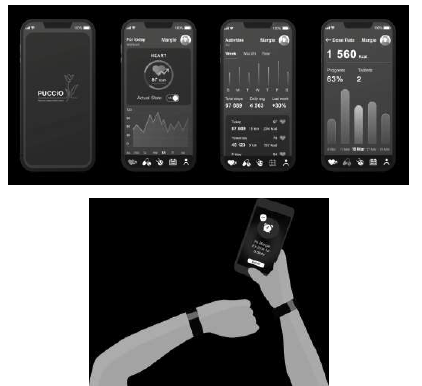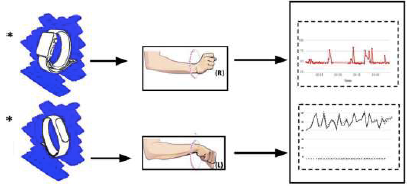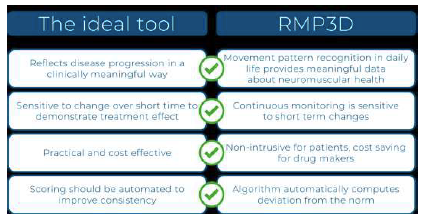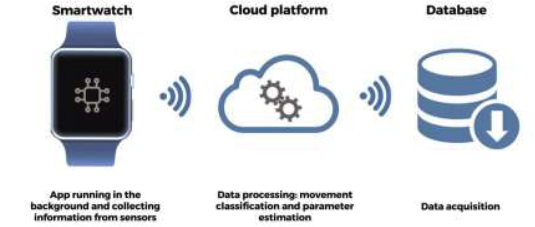This website uses cookies so that we can provide you with the best user experience possible. Cookie information is stored in your browser and performs functions such as recognising you when you return to our website and helping our team to understand which sections of the website you find most interesting and useful.
ATTRACT student projects
Discover the ATTRACT student projects boosting sensing and imaging technologies to enable breakthrough innovations for society
Team
The team members working on this project are the following:
Team 1:
Emilio Rampolla
del Tindaro
MSc in Business Analytics
Esade Business School
Stella Gasman
MSc in Business Analytics
Esade Business School
Gerard Doménech
Cobos
Bachelor on Telecommunication Engineering
UPC
Majd Abdulky
Interaction design
IED
Team 2:
Gonçalo Alves
MSc in Business Analytics
Esade Business School
Lucas Revereault
MSc in Business Analytics
Esade Business School
Yi Sheng
Master on Telecommunication Engineering
UPC
Aurora Ferrández
Martínez
Sustainable design
IED
Team 3:
Laura Caveziel
MSc in Business Analytics
Esade Business School
Marc Martínez
Gost
Master on Telecommunication Engineering
UPC
Carla Camerlingo
Service design
IED
Vitore Gobatto
Alves
Service design
IED
Project RPM3D
is based on ATTRACT project RPM3D
Background
The RMP3D technology currently under development at the Computer Vision Center (UAB) emerges as a conjunction of hardware and software. The main idea behind it is the ability to capture movements through sensors and translate them with an algorithm into a measure of the state of the motor cortex. The mechanism can be summarised in two different stages:
-
Data capturing: when a user performs a movement with his arm, this is captured by means of sensors located inside a smart band. For instance, representative sensors able to characterise movements would be an accelerometer or a gyroscope to capture accelerations and rotations, respectively. As seen, this stage is mostly hardware.
-
Kinematic analysis: the incoming patterns are further evaluated in terms of the Theory of Rapid Human Movement, which states that humans perform movements that can be characterised by a log-normal distribution of its velocity. In light of this theory, people suffering from neuromuscular system alterations due to diseases or accidents show a velocity distribution that differs from the expected one, i.e. a healthy user. In this last stage, velocity patterns can be studied as a distribution and, therefore, translated into a metric that describes the current state of the neural motor cortex.
The novelty of this technology resides in this last step, where 3D movements are translated into a measure of the state of the neuromuscular system. Currently this development is in the 6th level of the technology readiness level (TRL6), since researchers are testing the device in a real but controlled environment in which the device is useful, that is, in early stages of rehabilitation in patients suffering from stroke at the Guttmann Institute.
Three teams have worked on the project; the goal is to explore the application of this technology with societal impact. The students and their teams are shown below:
Outcome
Team 1 explored using the technology to help Parkinson’s patients. To do so the team came up with a product concept named Puccio.
Puccio is a monitoring device to track, predict and control Parkinson’s disease symptoms, to improve their quality of life and gain new knowledge about the disease.
The team followed design thinking methodology to understand that their product is adding value to the patient’s life and in which way the solution supports or conflicts with their lifestyle and use cases. We also kept in mind the feasibility of the product and how it can be managed and monitored easily by patients and doctors. The team focused on what the business wants to accomplish by making it actionable and flexible.
Patients with motor disabilities need to be able to easily anchor and position the wearables to their bodies. Wearables are designed to achieve the highest comfort for daily movements of the patient.

Team 2
RPM3D is the programme that we could use to monitor the patient movement remotely. Cerebral stroke is a group of diseases whose main clinical manifestations are cerebral ischemia and hemorrhagic injury symptoms, also known as stroke or cerebrovascular accident, with extremely high mortality and disability rate, mainly divided into hemorrhagic stroke (cerebral infarction is the most common type of cerebral haemorrhage or subarachnoid haemorrhage) and ischemic stroke (cerebral infarction, cerebral thrombosis). Stroke has a sudden onset and a high mortality rate, and is one of the most important lethal diseases in the world. The mortality rate of a stroke also tends to increase with age. Due to the lack of effective treatments, prevention is currently considered to be the best measure. Hand and foot palsy, language disorders, and visual impairments are the precursors of stroke.
Today, the biggest issue is not mortality of stroke, but the consequences of stroke on the survivors. To cope with the disability rate, we have identified three key domains where improvement is needed: Responsiveness, monitoring, and patient autonomy.
Tracking patient movement
The proposed solution is a significant improvement to the current way stroke rehabilitation is done. Nowadays, this process mostly consists of regular doctor appointments on the part of patients. During the sessions, the doctor asks patients to perform certain movements and they assess how much, if any, progress has been made towards rehabilitation since the previous session. This is clearly a flawed method, because the doctor doesn’t have any information on how the patient is doing outside of the allotted time they have with the patient.
The proposed solution would allow patient information to be monitored at all times, twenty-four hours a day, yielding a more thorough set of information on how the patient is doing. What’s more, because the data on the patient is so extensive and complete, this technology reduces the likelihood of overlooking symptoms that might indicate a high probability of a relapse.
These optimistic prospects can be achieved with a lower amount of hospital visits on the part of the person being treated, which is not only more convenient for the patient but also allows for doctors to be free to engage in appointments with other patients whose condition might require in-person care.
Wristbands compatible with the technology
The technology that has been developed by the Consortium of organisations involved in the project is to be embedded in a wearable wristband that the patient would wear at all times. As of today, the only wristband on the market that has the specifications required to capture the frequency levels needed is the Apple Watch. However, this is not to say that the variety of wristbands in which we can embed the technology will be limited at the time the product is launched into the market.
The reason for such cautious optimism is that the speed of technological progress is ever-increasing in present times, and the proposed solution is at an early enough level of development that won’t be available to the public in the short-term. As such, it is reasonable to expect the required frequency capturing capabilities to be mainstream in many models of wristbands by the time this technology is ready to be sold to the masses.
Proprietary technology
The proposed solution is, in short, the merger of the technology developed in a lab by the Attract project partners with a regular, everyday wearable device. Thus, it is reasonable to be concerned about the possibility that such a product might be easy to replicate. However, that is not the case in this situation, because the technology developed is protected as intellectual property, thus creating a strong competitive advantage between the team and other groups of people that might attempt to solve a similar problem. Even if other researchers develop a different technology that can do what the proposed solution can, at bare minimum the team will benefit from a first mover advantage, as it pertains to being the first product of its type on the market.
Both wrists require a wristband on them
The wristband that is used in tandem with the technology detects and tracks the patient’s movement. However, stroke is a particular condition in this case, in that symptoms of a potential relapse may manifest asymmetrically.
This means that it is possible that one arm may be displaying a sign of potential relapse, as it relates to the movement patterns it exhibits, while the other arm behaves in a way that does not show any symptoms. Because of such a characteristic feature of the stroke condition, the wristbands on which the technology rests have to be worn by the patient in both wrists, in order for the predictive power of the technology to be as high and reliable as possible.

Team 3
The RMP3D technology is ideally suited to address the current shortcomings of two of the three dimensions of the Multiple Sclerosis Functional Composite (MSFC) framework. While cognitive function cannot be assessed using the technology, arm and leg functioning can reliably and objectively be assessed.
For those two dimensions, the RMP3D technology addresses all the above-mentioned shortcomings. When the task force first developed the MSFC framework, they outlined what an ideal clinical outcome assessment tool would look like. With the technology available at the time they were not able to fully fulfil all criteria, but to account for this they explicitly designed MSFC to be open for innovation as new technologies emerge.
The below table summarises the characteristics outlined by the taskforce and shows how the RMP3D technology has the features to fulfil all of them.

It is important to highlight here, that the fact that the technology can be integrated in an established and well-known framework, the MSFC, will significantly ease adoption, as trial protocols have to be changed only minimally and no extensive retraining of staff will be necessary.
To summarise, we propose integrating the data on arm and leg functioning produced by the RMP3D technology within the MSFC framework, replacing the subjective, sporadic and unresponsive in-clinic tests with continuous, objective and responsive data on disease progression obtained through the combination of sensor data and the proprietary RMP3D algorithm that translates the 3D movement data into a mathematical model that can be used as a metric to evaluate the state of the neuromuscular system.


